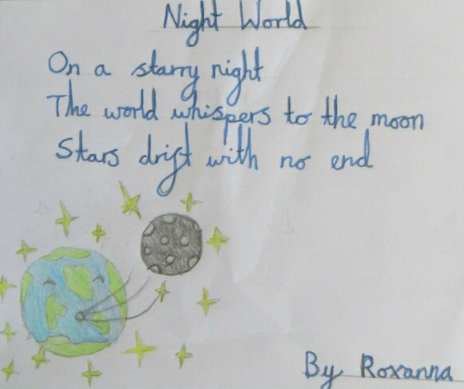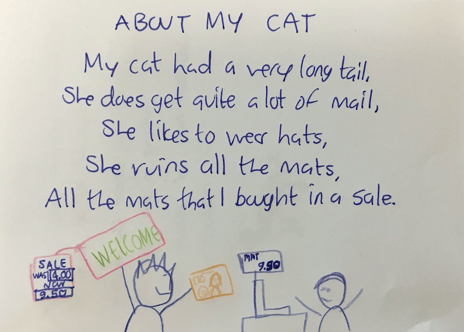Poetry is one of the most flexible and creative forms of writing, and it can be a brilliant way to engage even the most reluctant students. It encourages expression, builds vocabulary, and helps students understand how language works in a rich and meaningful way.
Teaching poetry in primary school doesn't have to be complex. By introducing students to a range of poetry types, you give them a toolkit to explore their creativity, play with structure and rhythm, and find their voice.
Whether you’re short on time or planning a longer poetry unit, these 12 types offer quick wins for the classroom. Each one includes a clear structure, offers opportunities for creativity, and can be easily supported using Pobble’s ready-made examples and writing prompts.
Haiku ✏️
A traditional Japanese form, Haikus focus on nature, weather or seasons. They follow a 5-7-5 syllable pattern and do not rhyme. Use Pobble to show real student examples and help your class write their own. Click here to browse.

With 14 lines and a specific rhyme scheme, sonnets encourage careful planning and precision. They’re ideal for exploring rhythm and structure while tackling themes like nature, emotion or change. See examples of how fellow teachers are teaching sonnets here.
Perfect for younger students or reluctant writers, acrostic poems use the letters of a word to begin each line. They are a great entry point to creative writing and can be themed around any topic. You'll find examples of acrostics from writing lessons around the world here. They cover everything from aliens to The Queen!
This diamond-shaped poem has seven lines that follow a specific pattern of nouns, adjectives and verbs. It’s a fun and structured way to build descriptive vocabulary. Check out these examples of diamantes.
Similar to a Haiku, a Tanka follows a 5-7-5-7-7 syllable pattern. Tankas are often used to express strong emotions or reflect on nature. They are also great for teaching metaphor, simile and personification. Check out these creative teaching examples.
Odes are poems of praise. Whether it’s a person, object or idea, students can practise using rich, descriptive language to show appreciation or admiration. Pobble includes examples written by students to inspire your class. Search 'Ode' on Pobble to see some examples. We especially like this 'Ode to a Cornish Pasty'!
Ballads are narrative poems that tell a story, often with a rhythmic structure. They work well when you want to link poetry and storytelling. Fancy writing ballads with your class? Check out these examples.
Short and humorous, limericks are made up of five lines with a specific rhyming pattern. They’re ideal for teaching rhyme and rhythm in a fun and accessible way. These examples from pupils around the world will make you smile and give you inspiration for a limerick lesson of your own! See them here.

Cinquains use five lines with a growing then shrinking syllable count: 2, 4, 6, 8, 2. They can be written about any topic and encourage precise word choice and structure. There are lots of examples of Cinquain written by children on Pobble. Click here to browse.
Also known as shape poems, calligrams combine art and writing by arranging text to form a picture. Great for visual learners, these poems can bring writing to life. A picture made of words! See examples of how fellow teachers are teaching sonnets here.
Kennings use compound noun phrases to describe something indirectly. For example, "cloud skater" for an aeroplane. These are brilliant for descriptive language and can be used across subjects. You'll find examples of kennings from writing lessons around the world here.
Free verse removes all the rules and allows students to focus on flow, imagery and voice. Without a set structure, students are free to write longer, more personal pieces. See examples of how fellow teachers are teaching free verse here.
Pick one poetry type each week and build a short routine around it. Use Pobble to find examples, model your own, and get students writing with confidence.
Pobble Education Ltd,
Rosehay,
Tremorvah Wood Lane,
Truro, TR1 1PZ,
Cornwall, UK